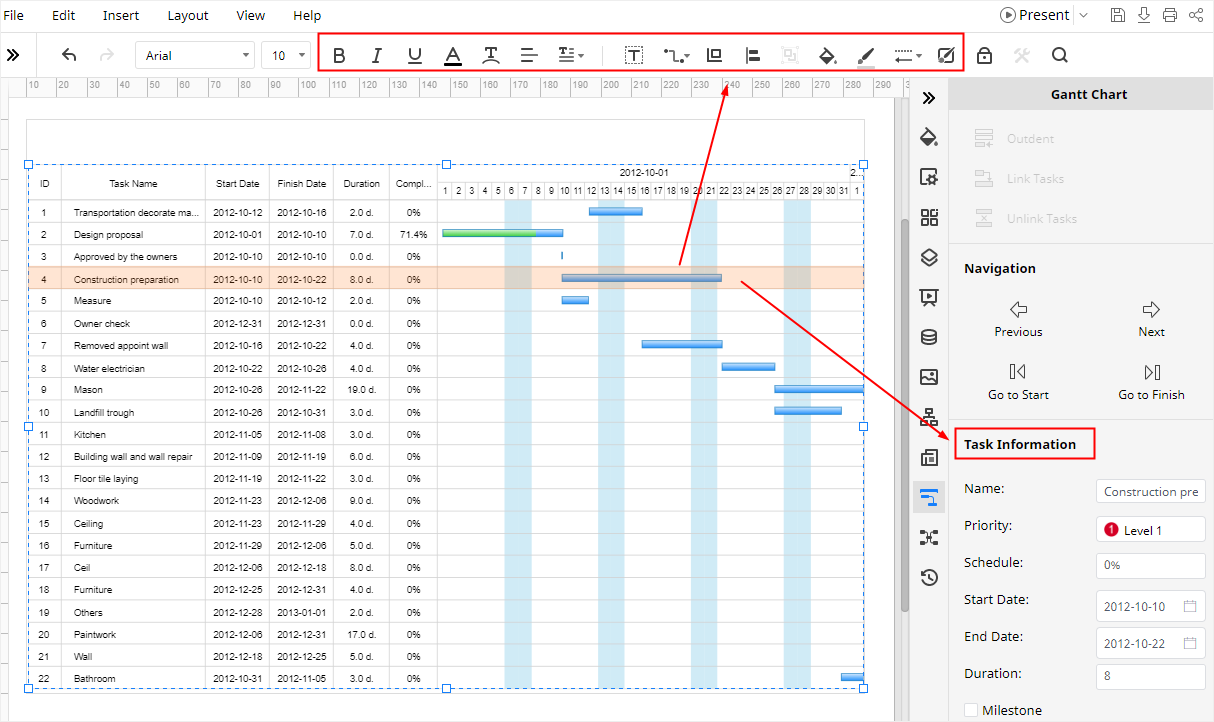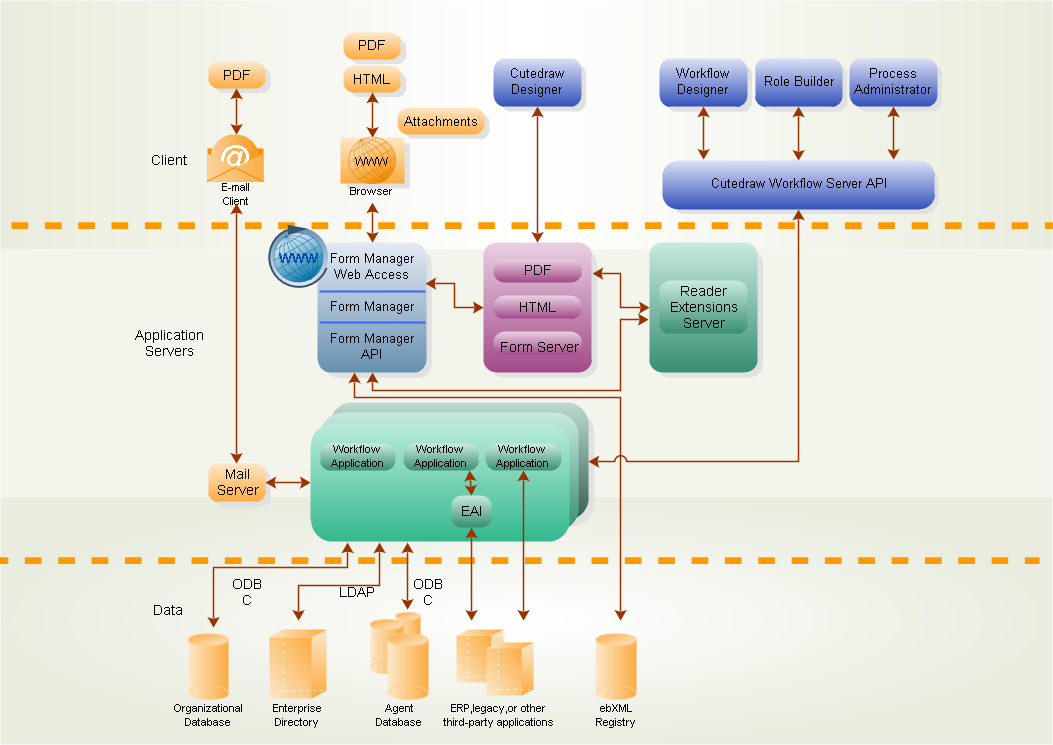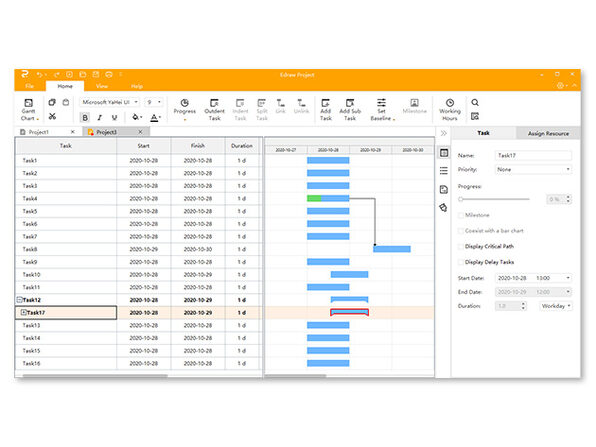How to Make a Gantt Chart in Google Sheets
Step 1: Open a New Spreadsheet
Search Google Sheets on the browser and click to create a new blank spreadsheet.
Edraw Project Timeline Template A free customizable Edraw project timeline template is provided to download and print. Quickly get a head-start when creating your own Edraw project timeline. It is the exact choice to create detailed and informative project timeline. Edraw Max is very intuitive and easy to use. Many attactive templates are available to quickly build professional illustrations/diagrams. Easily create math equations, drawing process flows or instrumentation diagrams, etc. Personally, I rate it as the best diagramming software I.
Step 2: Input the Data of Project
Have a try right now: how to indent and outdent a task by using the project management software Edraw Project!
On the new spreadsheet, you at least need to enter or paste the task names, start dates and finish dates for making a Gantt chart. These tasks would be listed in the order of occurrence and the date format should be as follows: Month/Day/Year.
Apart from those, creating a Gantt chart still needs the data of the Duration in Google Sheets, which is the actual amount of the days to complete each task.
In this example, to calculate the duration days, we use the formula as shown above:
=( int(C2) - int($B$2) ) - ( int(B2) - int($B$2) ). This formula represents “Task Duration = Finish Date – Start Date“.
Edraw Project Manager
In the meanwhile, the formula for calculating the column of Start Date (B10 : B15) is that “int(B2) - int($B$2)”. If you don’t figure out this column, it will be hard for you to continue the following steps.

Thus, we get a new table (A9 : C15). This table will be the actual data for creating a Gantt chart in Google Sheets, which is different from creating a Gantt chart in Excel (https://www.edrawmax.com/gantt-chart/how-to-make-a-gantt-chart-in-excel/).
Step 3: Insert a Stacked Bar Graph
Select the new table (A9 : C15), go to the “Insert” tab, click “Chart” on the drop-down menu, and you will see a stacked bar graph and the Chart editor pane shown on the spreadsheet.
Step 4: Transform the Bar Graph into a Gantt Chart
Click to select all the Start Date bars (the blue bars) on the bar graph, the Chart editor pane will automatically direct into the Customize tab, and you can change the bar color under the Series group.
Click the Color button under the Format option, select None on the color menu.
Therefore, the final Gantt chart will be like:
Open the Template gallery in Google Sheets, and you will find a Gantt chart template under the Project management category.
Click on the thumbnail to open the template, then you can enter your project information and project data into this template to make your own Gantt chart.
How to Make a Gantt Chart in Edraw Max
You can make a Gantt chart in Google Sheets manually or with the help of pre-made templates. However, both ways can be tricky and time-consuming. Next, we will introduce you to how to streamline the process using Edraw Max.
Step 1: Pick Your Favorite Gantt Chart template
As you can see, Edraw Max provides abundant inbuilt templates for users. If you don’t find desired templates in the application, you can also search on (Edraw Template ) and download any template on your computer.
Step 2: Open a Gantt Chart Template
Click on the template thumbnail and Edraw Max will open this template for you automatically.
Or, if you already have downloaded some Gantt chart templates from Edraw Template, you can click the Import button on the Home page, and follow the instructions to open the template in Edraw Max.
Step 3: Import Project Data
The other way of making a Gantt chart in Edraw Max is to import the project data and Edraw Max will auto-generate a Gantt chart. Before that, you should arrange the project data and the information of task names, start dates, finish dates, duration days, etc. should be included at least.
Open a blank template, click on the Gantt Chart icon on the right sidebar and click the Import button on the Gantt Chart pane. Follow the instructions and the Gantt chart will be like:
Step 4: Customize Your Gantt Chart
For using a template, you can use the formatting tools on the Fill/Line/Shadow pane (), Page Setup pane () and Theme pane () to change colors, backgrounds and themes.
For importing project data, you can go to the Gantt Chart pane, modify task information, change the columns and data formats shown on the chart.
With these formatting tools, you are able to make any kind of Gantt chart as you like.
How to Export a Gantt Chart to Excel
In Google Sheets, you can download the Gantt chart you make in different file formats. Go to the File tab, click Download on the drop-down menu and you can select Microsoft Excel on the menu, thus the Gantt chart will be exported as an Excel file.
Edraw Software Reviews
In Edraw Max, go to the File tab, click on Export on the drop-down menu, and you will find that the Gantt chart can be exported and downloaded in many common file types, such as graphics, PDF, Word, Excel, PowerPoint, etc.
Especially, all the MS Office files exported from Edraw Max are editable and printable. It will be more convenient and efficient for you to share your Gantt charts with others.
To share your Gantt charts with others, you can also click on the Share button on the drop-down menu or on the upper right corner of the main interface. Then the Shared Successfully windows will pop up and you can choose one of the sharing methods.
Related Articles
- How to Make a Gantt Chart in Excel
- How to Make a Gantt Chart in PowerPoint
- How to Create a Timeline in Excel
- Launch New Product Gantt Chart Template
- Auto WBS Template
- Enterprise Management HOQ Template
What is a Gantt Chart?
Gantt Chart is a straightforward yet useful tool for every project manager. To complete a project successfully, one needs to control an array of tasks. No matter how stringent adequate supervision can be, with a Gantt Chart, the progression path towards your goal gets clear.
It is a visual timeline of projects in the form of a bar chart. It shows the entire project schedule and illustrates various relationships between the tasks performed and the current status of the project schedule.
Image Source: gstatic.com
History of Gantt Charts.
The foundations to the Gantt Chart were first laid in the late 1800s when a Polish engineer Karol Adamiecki first introduced the Harmonogram, which is the predecessor of the Gantt Chart.
Image Source: gstatic.com
In 1910, American Mechanical Engineer, Henry Gantt took the Harmonogram to its next stage, namely the Gantt Chart, while working alongside a colleague. One of the earliest known applications of the Gantt Chart is known to be undertaken in World War I by the Americans.
The early Gantt Charts were hand-made. Hence, for any update or changes, the chart was redrawn completely.
In the 1980s, with the advent of personal computers, these charts were revolutionized, and complex Gantt Charts could now get created. By the late 1990s, with the arrival of the Internet and the world wide web, these charts became a ubiquitous feature of many web-based applications.
By 2012, the software was the sole source of creating almost all Gantt Charts.
Why do we need Gantt Charts?
- Keep managers up-to-date about the ongoing project;
- Improvement in communications and collaborations regarding assigned tasks;
- Effective and efficient use of resources to avoid overload;
- Easy checking and measuring the progress of the project and changing strategies, accordingly;
- Monitor task dependencies and strategize accordingly so that no task gets hindered;
- Provides clarity to the project underway and helps managers to pull it out with ease;
- Improves time-management skills.
When to use Gantt Charts?
By now, you know what a Gantt Chart is and how it can benefit projects and the team undertaking the projects. But you must be asking yourself that “when do we use the Gantt Charts?” Fret not, for in this section; we will see when to use a Gantt Chart.
Well, be it a production unit or a construction project, or a software development project. A Gantt Chart is applicable in any case. You can even deploy a Gantt Chart if you are preparing for any nation-wide exam. However, here, we will look at a few situations when the Gantt Chart becomes very important:
As we have many times already, a Gantt Chart helps visualize the overall tasks of the project and thus helps to schedule the whole project accordingly. It takes into account certain factors like the deadline for the project, various tasks included, the time needed for their completion, resources required and available at hand, and the critical path of the project.
- Critical Path: it is the longest path or sequence of activities that you need to accomplish for the completion of a project within the stipulated time. It is measured from the start of the project until the project is handed over to the client.
- The path displays a sequence of activities or tasks whose completion is vital to the success of the project. Failure of one would mean the collapse of the next, which would ultimately lead to the failure of the project as a whole. These critical tasks are commonly and collectively called “dependencies.”
There are four significant types of dependencies:
A. Start-to-finish: Task A is to start before Task B gets over;
B. Start-to-start: Task A is to start before Task B completes;
C. Finish-to-finish: Task A is to finish before Task B is over;
D. Finish-to-start: Task A is to complete before Task B begins.
A Gantt Chart helps to track all these dependencies as well as the time pockets between two jobs, i.e., the time delay acceptable for each task. With so many factors to look after, the human brain is likely to miss out on some. But, the Gantt Chart, on the other hand, does not, and that is why it is the best tool to track a project.
A project report is something that helps managers stay updated about the overall progress of a project focusing on aspects like the schedule and deadline, budget, project aims and goals, and more. Your investors and shareholders will always want to know where the project is standing; in simpler terms, what fruit has their money bore. It is where a Gantt Chart shows its miracles.
With its insightful and visually- engaging format, you can easily describe the overall progress of the project in just a few minutes and in an effortless way. Moreover, you can have accurate information about the various metrics involved in the project, as well as a clearer understanding of the workflow and to determine a precise delivery date for the project based on its current state.

Gantt Chart vs. Timeline.

In essence, both the Gantt Chart and Timeline are the same thing. They are both project management tools and displays the project path and chronological order of the included tasks to be carried out. However, they differ from each other slightly in appearance and information included. Below is a tabulated comparison of the two types of project management tools, taking into account the similarities and differences between them.
In general, most organizations employ the use of a timeline along with either a Gantt Chart or a Work Plan.
Gantt Chart Examples.
This kind of Gantt Chart shows the various tasks included in developing new software along with provisions for future updates and version releases. Every software development company uses one such Gantt Chart. Below is a glimpse of how a Software Development Gantt Chart looks.
Interior designing and decoration firms also use the Gantt Chart for their projects from time to time. As we saw that a Gantt Chart could get used for every kind of project, then why not for such a process. The various aspects like resources and tasks, their progress, along with dependencies in the project, get visually represented here.
Managing moving parts along big construction projects can be made very easy with the help of Gantt Charts. It is why the construction site and project managers often use them. You can break each phase of the project and show the dependencies smoothly with a Construction Scheduling Gantt Chart.
How to Make a Gantt Chart with Edraw Max online?
I know you all have been eager to see how you can draw a Gantt Chart. Well, with Edraw Max online, it is quite an easy task. However, before we start to draw one, it is necessary to make some preparations.
- Understand what your project is and analyze the end goal;
- Chalk out a step-by-step list of activities;
- Determine an estimated time of completion for every task;
- Measure the resources you have for the project to those you need;
- Determine the critical path;
- Determine the dependencies along the critical path;
- Distribute the project among the teams with clear responsibilities for each group.
Now, we will walk through a step-by-step guide for creating a Gantt Chart with the help of Edraw Max online.
a. If you want to create a Gantt Chart with customizations, then click on “+.”
b. If you want a Gantt Chart with an existing template, then select any from the available ones.
[ File > Save As >Select your desired location – “Personal Cloud”/ “Google Drive”/ “DropBox” > Give a desired “File Name” > Click on “OK.” ]
More Gantt Chart templates.

Here are some more Gantt Chart templates:
1. Software Development Gantt Chart Template
2. Interior Decoration Gantt Chart Template
3. Construction Scheduling Gantt Chart Template
4. Product Launch Gantt Chart Template
5. Show Planning Gantt Chart Template
6. Market Strategic-Planning Gantt Chart Template
Related Articles
- Construction Gantt Chart Templates
- What is Gantt Chart
- Create A Gantt Chart
- Gantt Chart Template
- Construction Gantt Chart
- Milestone in Gantt Chart
